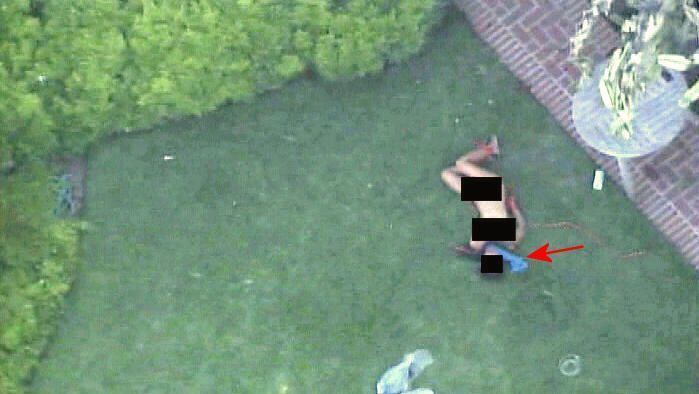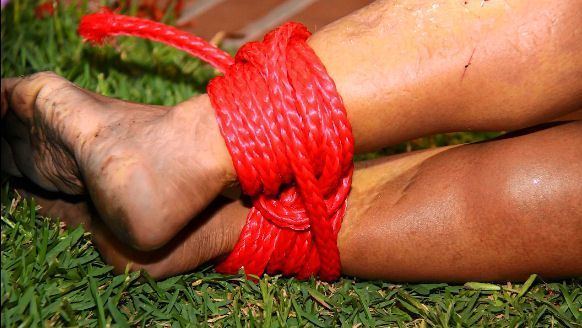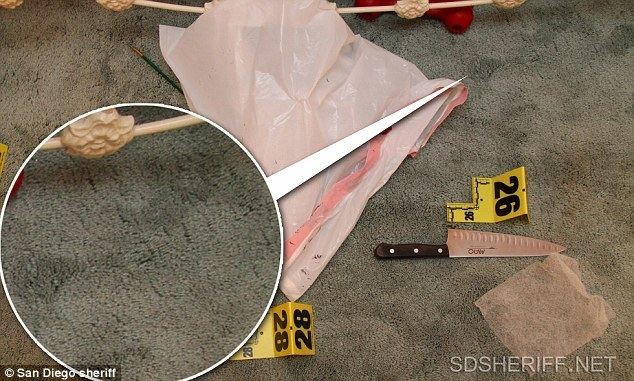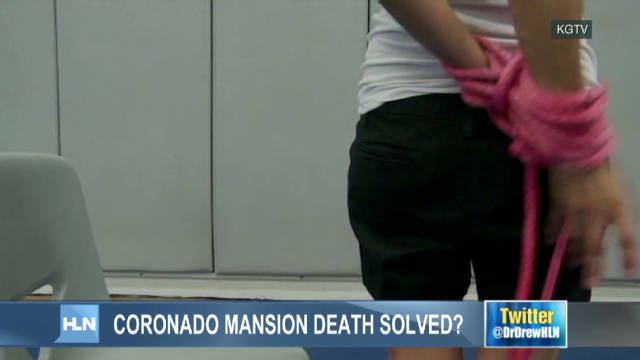Nationality American Name Death Rebecca | Ethnicity Chin Other names Rebecca Nalepa | |
 | ||
Spouse(s) Neil Nalepa (m. 2002; div. 2011) Partner(s) Jonah Shacknai (2008-2011) Died July 13, 2011, Coronado, California, United States Similar Jon Erik Hexum, Marc Aaronson, Brandon Lee | ||
The mysterious death of rebecca zahau
Rebecca Mawii Zahau, 32, was discovered dead on July 13, 2011, at the Spreckels Beach House in Coronado, California, owned by her live-in boyfriend Medicis Pharmaceutical CEO Jonah Shacknai. Zahau's death occurred two days after Shacknai's 6-year-old son, Max, took a fatal fall from a staircase banister in the same beach house. Zahau was the only adult present at the time of his fall. San Diego Sheriff Bill Gore announced on September 2, 2011, that Zahau's death was a suicide while the younger Shacknai's was an accident, and that neither was the result of foul play. Members of Zahau's family sued Max's parents for $10 million, disputing the contention that her death was suicide.
Contents
- The mysterious death of rebecca zahau
- Coronado mansion case death of rebecca zahau adam shacknai lie detector report
- Background
- Overview
- Zahaus death
- Cell phone
- Other evidence considered
- Public and media
- Family
- Lawyers and public relations personnel
- References

Coronado mansion case death of rebecca zahau adam shacknai lie detector report
Background

Zahau (born March 15, 1979), also known as Rebecca Nalepa, was of Burmese immigrant origin. She was born in Falam, Chin State, a town in the Chin Hills in northwestern Burma, to her father Khua Hnin Thang and mother Zung Tin Par (also known as Pari). She came from a family of Chin ethnicity and was raised as a Protestant. She moved to Nepal and then Germany. She moved to the United States about 10 years before her death. Her parents and most family members live in Saint Joseph, Missouri. She had an older sister, Mary Zahau-Loehner, a younger sister, Snowem Horwath, who lives in Germany, and a teenage sister, Xena Zahau, among other siblings. In August 2009, Zahau was arrested for shoplifting under the name Rebecca Nalepa. She pleaded guilty to stealing $1,000 worth of jewels from Macy's in Phoenix, Arizona. In 2002, she had married then-36-year-old nursing student Neil Nalepa of Scottsdale, Arizona; they divorced in February 2011. She began dating Shacknai in 2008, while still married to Nalepa. She worked as an ophthalmic technician until quitting in December 2010.

Jonah Shacknai, the 54-year-old CEO of Medicis Pharmaceutical, was born in Suffern, New York and lived in Arizona but often took vacations with his family to the Coronado house. His position made him Arizona's ninth-highest-paid CEO, earning $6.4 million in 2010. He had been married twice. His first marriage to Kimberly James resulted in a divorce and a three-year custody battle between 1998 and 2001 involving the couple's two children from that marriage. He would go on to have a son, Maxfield Aaron "Max" Shacknai (born June 7, 2005), with second wife Dina Romano. However, Shacknai and Romano's marriage was marked by ongoing claims of violent domestic abuse from both parties and ended in divorce in Maricopa County, Arizona.
Overview

On July 11, 2011, Zahau and Max Shacknai were at the Spreckels Beach House along with Zahau's teenage sister Xena when Shacknai’s son Max fell over a second-floor banister. Investigators speculate he may have tripped over a ball or the dog. He fell face-first, suffering injuries to his spinal cord and facial bones, the former of which affected his heart rate and breathing. Zahau said she was in the bathroom at the time; she found Max moments later, and her younger sister called 911. Max was not breathing and unresponsive, and was taken to Rady Children's Hospital. Max died on July 16 due to brain damage caused by oxygen deprivation resulting from his injuries.

On July 26, investigators ruled the boy’s death as an accident. However, a trauma doctor who examined Max prior to his death and autopsy stated to police that he did not believe Max's visible injuries from his fall were consistent with the cardiac arrest and brain swelling experienced by him, and suggested that Max may have suffocated prior to his fall.
Zahau’s death

On July 12, the day before her death, Zahau went to the airport to drop off her 13-year-old sister for her flight back to Missouri, and then picked up Shacknai's brother Adam Shacknai, who had just arrived on a flight from Memphis. Zahau and Adam Shacknai ate dinner with Jonah Shacknai and his friend Howard that evening, and then returned to the beach house. Adam Shacknai stayed at the house that night. There were reports of loud music coming from the house that evening. Jonah Shacknai was supposedly keeping a vigil at Max's bedside with Max's mother Dina Romano; he would leave the hospital to recuperate at a nearby Ronald McDonald House. Adam Shacknai stated that he found Zahau nude, hanging from a balcony, with her wrists and ankles bound, at roughly 6:45 AM on the morning of July 13. He called 911 at 6:48 AM, and then sent a text message to his brother to inform him of the news. He cut the body down prior to police's arrival.
Zahau was gagged with a blue, long sleeve T-shirt wrapped around her head with the sleeves double knotted and stuffed into her mouth. There was also what appeared to be tape residue on her legs. Medics attempted to revive her, but pronounced her dead at the scene. The police initiated forensic and toxicology testing on her body as part of an autopsy to determine the cause of death. She was buried at St. Joseph's Memorial Park in St. Joseph, Missouri on July 23. Speculations of foul play began early on in the case; however, investigators were unable to find any other DNA at the scene besides Zahau's. On September 2, the San Diego County Sheriff's Department formally announced their finding that Zahau committed suicide.
Cell phone
As part of their investigation, police served Verizon and AT&T with search warrants to obtain cell phone billing records, and took Zahau's Samsung Focus cell phone as evidence. According to Zahau's AT&T cell phone billing records, from roughly 8 p.m. until 10 p.m., Zahau talked and texted with her older sister Mary Zahau-Loehner, who confirmed that Xena had arrived home safely. At 10:48 p.m., Zahau received a text from Nina Romano, the twin sister of Shacknai's ex-wife Dina Romano. Nina Romano stated that she wanted to stop by the house and speak with Zahau about Max's accident. Zahau did not reply to that message. Police said she checked her voice-mail a few hours later, at 12:50 a.m. on July 13, and listened to a message. Billing records do not show who left that message. Police stated it was a message regarding the worsening of Max's condition, but declined to confirm at that time who left the message. Mary Zahau-Loehner stated that police told her it was from Jonah Shacknai. The message was deleted, meaning that police and Zahau's family never heard the contents of the message.
Because of evidence management concerns, San Diego County Sheriff's Department investigators initially did not attempt to power up the phone or operate it, fearing that they might over write evidence contained in its memory. Instead, they tried to determine whether forensic software was available which would allow them to examine that model of phone. On August 15, unable to identify any such technology, a detective turned on the phone and conducted a manual search of it, finding that the voice-mail message was not stored on the phone. They did not request that AT&T try to retrieve the deleted message from its servers. Later, on September 21, a homicide investigator with the department announced that they would be searching it again, using what they described as "new technology" to copy the phone's data for further investigation. Because Zahau's cell phone was a newer model that investigators were not familiar with, they had previously been unsure what software they could use to accomplish this task. In early October, investigators completed their second examination of the cell phone. They stated that they did not uncover any additional information and would soon return the phone to Zahau's family.
Other evidence considered
Zahau's autopsy results would reveal four instances of head trauma. Investigators and outside commentators expressed various theories regarding the head injuries. San Diego Medical Examiner Jonathan Lucas stated that "because there was evidence that she went over the balcony in a non-vertical position, she may have struck her head on the balcony on the way down." Werner Spitz, an expert witness who testified during the trial of Casey Anthony, said it was a possibility, stating, "When the body first dropped, she doesn't necessarily jump to her death, so she would drop directly downward and she could easily hit against the side of the structure from which she is hanging." However, he noted that the case was not "cut-and-dried" and that to draw stronger conclusions he would have preferred to see what the body looked like before the wrist bindings were removed. Forensic consultant and doctor of criminal psychology Maurice Godwin expressed doubt, stating, "The chances of bumping into the railing, going over the balcony and hitting your head four times is highly unlikely."
Family members expressed suspicions that Zahau's hands and feet were bound. In an interview about a week after the incident, San Diego county sheriff Roy Frank stated, "There are documentations of incidents throughout the country where people have secured their feet and hands as well to commit suicide," to prevent themselves from changing their minds. Police re-enacted the scenario in an effort to determine whether it would have been possible for Zahau to bind herself in that fashion, and showed a video demonstration in which a woman wrapped a rope around her hands several times in front of her, slipped one hand out of the binding, then placed her hands behind her back, rebound them, and tightened the bindings with the aid of a string similar to the one which police found in Zahau's hands.
A black message had been painted on the door of the room leading to the balcony below police found Zahau's body; according to Zahau's ex-husband Nalepa, it read "She saved him, can he save her." but officials declined to confirm this. In media comments, Sheriff Gore only stated that it was "not a clear suicide note"; however, investigators took it as further evidence of suicide. Zahau liked to paint as a hobby and had signed her paintings in the past; her siblings contended that the message did not match her handwriting. Nalepa also stated the note "did not appear to be something [Zahau] would have written."
Public and media
The deaths drew intense public and media scrutiny. On July 14, Medicis had its sharpest one-day decline in stock price since February. News of the death and investigation received international coverage in various countries including Brazil, New Zealand, Finland, Spain, and the United Kingdom throughout July and August. In early September, various Forbes writers, including true crime writer Cathy Scott and lawyer Victoria Pynchon, expressed doubts about the investigators' conclusions; Pynchon described the ruling as an "embarrassing public blunder." The Daily Beast published a column by trial lawyer Roy Black, in which he criticized "half-baked theories" about Zahau's death, in particular stating the lack of DNA evidence: "How could anyone do all this without leaving behind a scintilla of microscopic evidence? They would have to have been wearing a full rubber suit or some type of space suit and levitated over the scene." He called on the media and public to "stop calling it murder." On September 19, it was reported that local Coronado author Kathleen McKenna would be writing a book on the case; McKenna expressed doubts that Zahau's death was a suicide.
Family
People close to Zahau expressed doubt that she would have committed suicide. Zahau's elder sister said in an interview that "I still believe my sister didn't take her life", and in a written statement on behalf of the family wrote that "Rebecca valued her life and lived her life to its fullest. Rebecca loved God, her family and life." Her younger sister commented more strongly by e-mail, "Becky did not commit suicide. My sister was murdered." Her former trainer also stated that "She was always happy [and] always smiling when she came in. I didn't see a problem or anything like that." Family members disputed police characterizations of Zahau as depressed, describing her instead that as a happy person. Furthermore, they state that Zahau believed as a Christian that suicide was wrong. After the suicide ruling, Neil Nalepa was quoted as stating, "I would not believe Rebecca would commit suicide. It’s out of character." However, Sheriff Bill Gore, who investigated the death, stated of the family's reluctance to accept the suicide ruling, "We laid out the case extensively to them in Missouri to answer their questions, and it’s unfortunate she can't accept the results." On September 7, the family launched a website JusticeForRebecca.org seeking donations to fund their own investigation into Zahau's death. The site states: "It was obvious that the Sheriff’s Department had worked too hard to paint this picture of suicide and they were not about to let the Zahaus ruin it." In late September, they continued to demand that the case be re-opened.
On September 20, Jonah Shacknai wrote a letter to California Attorney General Kamala Harris requesting a state review of the investigation. Shacknai himself did not doubt the findings of investigations, but said he hoped a review would bring "confidence, comfort and resolution" to others close to Zahau. However, chief assistant attorney general Dane Gillette replied the following day, stating that "we must decline your invitation to review this investigation at this time" On September 30, family members appeared on NBC Today and called for a complete independent investigation by the state Attorney General's office.
Lawyers and public relations personnel
Zahau's family hired Seattle attorney Anne Bremner to represent them. Bremner expressed derision at the medical examiner's conclusions, stating, "This would be the first case in the history of the world that a woman killed herself like this ... It's ridiculous on the face of it." Dan K. Webb of Winston & Strawn LLP, a lawyer for Shacknai, alleges that other statements of Bremner's imply that Shacknai used his wealth and profile to improperly influence the probe into Zahau's death. He sent a cease and desist letter to Bremner warning her that certain statements of hers constituted defamation, as well as being "highly insensitive on a human level" and contributing to "the harsh and unkind glare of a national media frenzy." However, Jim Edwards of CBS BNET suggested it was unlikely that Shacknai would actually sue, as it would simply bring more publicity to the case; he expected that the situation effectively "leaves the Zahau family to continue their claims unchallenged."
Shacknai also hired public relations firm Sitrick and Company to represent him the week after Zahau's death. In response to media inquiries, a Sitrick and Company employee stated that Shacknai had hired the firm to handle his large volume of incoming calls in the days after the deaths, to give him time to grieve and make arrangements for the funerals. Sitrick and Company executives later held discussions with journalists whom they believe had made errors in their reporting on the case.
